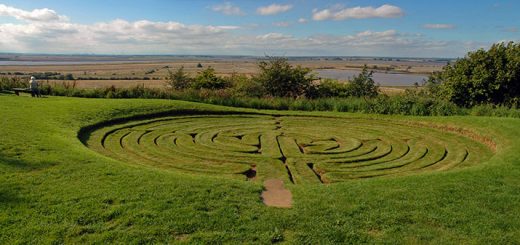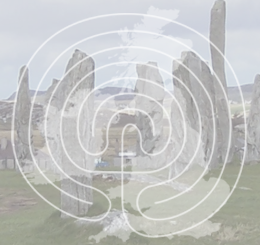Mayburgh Henge (aka Mayborough Henge)
In ‘Rude Stone Monuments In All Countries, Their Age And Uses’ (1872) (which was later retitled ‘Old Stone Monuments’), James Fergusson(1808-1886) gives the following description of Mayborough Henge.
‘Close to Penrith is another circle called Mayborough, of about the same dimensions — 100 metres — as that at Little Salkeld, but of a very different construction. The vallum or enclosure is entirely composed of small water-worn stones taken from the beds of the Eamount or Eden rivers. The stones are wonderfully uniform in size, and just about what any man could carry without inconvenience. This enclosure mound is now so mined that it is extremely difficult to guess what were its dimensions. It may have been from 1.5 feet to 20 feet high, and twice that in breadth at its base. The same cause makes it difficult to determine the dimensions of the internal area. The floor of the circle I calculated as 290 feet from the foot of one slope to the foot of the opposite one, and consequently the whole as from 320 feet to 340 feet from crest to crest; but these dimensions must be taken as only approximative till a more careful survey is made than it was in my power to execute. Near, but not quite in the centre, stands a single splendid monolith; it may be 12 feet in height, but is more than twice the bulk of Long Meg. In Pennant’s time* there were four stones still standing in the centre, of which this was one, and probably there may originally have been several more forming a small circle in the centre. In his day also he learned that there were four stones — two pairs — standing in a gap in the vallum looking like the commencement of an avenue. The place, however, is too near Penrith, and stone is there too valuable to allow of such things escaping, so that nothing now remains which would enable us to restore this monument with certainty.’
In 1773 Robert Hutchinson wrote: “The inhabitants in the neighbourhood say, that within the memory of man, two other stones of similar nature, and placed in a kind of angular figure with the stone now remaining, were to be seen there, but as they were hurtful to the ground, were destroyed and removed.”
*Thomas Pennant (Born 14 June 1726 – Died 16 December 1798)





Recent Comments